DJI Mic 3 First Impressions: Mini Body, Flagship Configuration and Experience
![]() 08/29 2025
08/29 2025
![]() 544
544
Truly "small but beautiful".
For those of us who frequently need to shoot videos, image quality is only one of the factors that determine the video experience; audio reception is equally important.
Although there are numerous brands and types of wireless microphones on the market today, not many products have left a good impression on me. DJI's Mic series is one of them. With high-quality audio recording and easy operation, it has always been a favorite of many users and has almost become a "must-have" for Vloggers. Now, the DJI Mic 3 has officially been released, with the following prices:
DJI Mic 3 Transmitter: 699 yuan
DJI Mic 3 (one transmitter and one receiver): 1299 yuan
DJI Mic 3 (two transmitters and one receiver, including charging case) + Mobile Connector (Lightning): 2398 yuan
DJI Mic 3 (two transmitters and one receiver, including charging case) + Camera Shoe Adapter: 2478 yuan
DJI Mic 3 (four transmitters and one receiver, including charging case): 3697 yuan
Recently, Leitech also obtained the newly released DJI Mic 3. Without further ado, let's take a look at how this new microphone performs in real life.
Mini body, flagship configuration
Before the DJI Mic mini appeared, I always thought the standard size for wireless microphones was the Mic 2, but the emergence of the mini has indeed broken my perception. It turns out that wireless microphones can be made so compact and convenient. However, its positioning is after all mini, so its performance in noise reduction, battery life, signal transmission, and internal recording is bound to be inferior to the flagship Mic 2.
The DJI Mic 3 not only has the compact size of the mini but also boasts stronger performance than the Mic 2. Just looking at the official data, I can vaguely guess how popular it will be in the market after its launch.
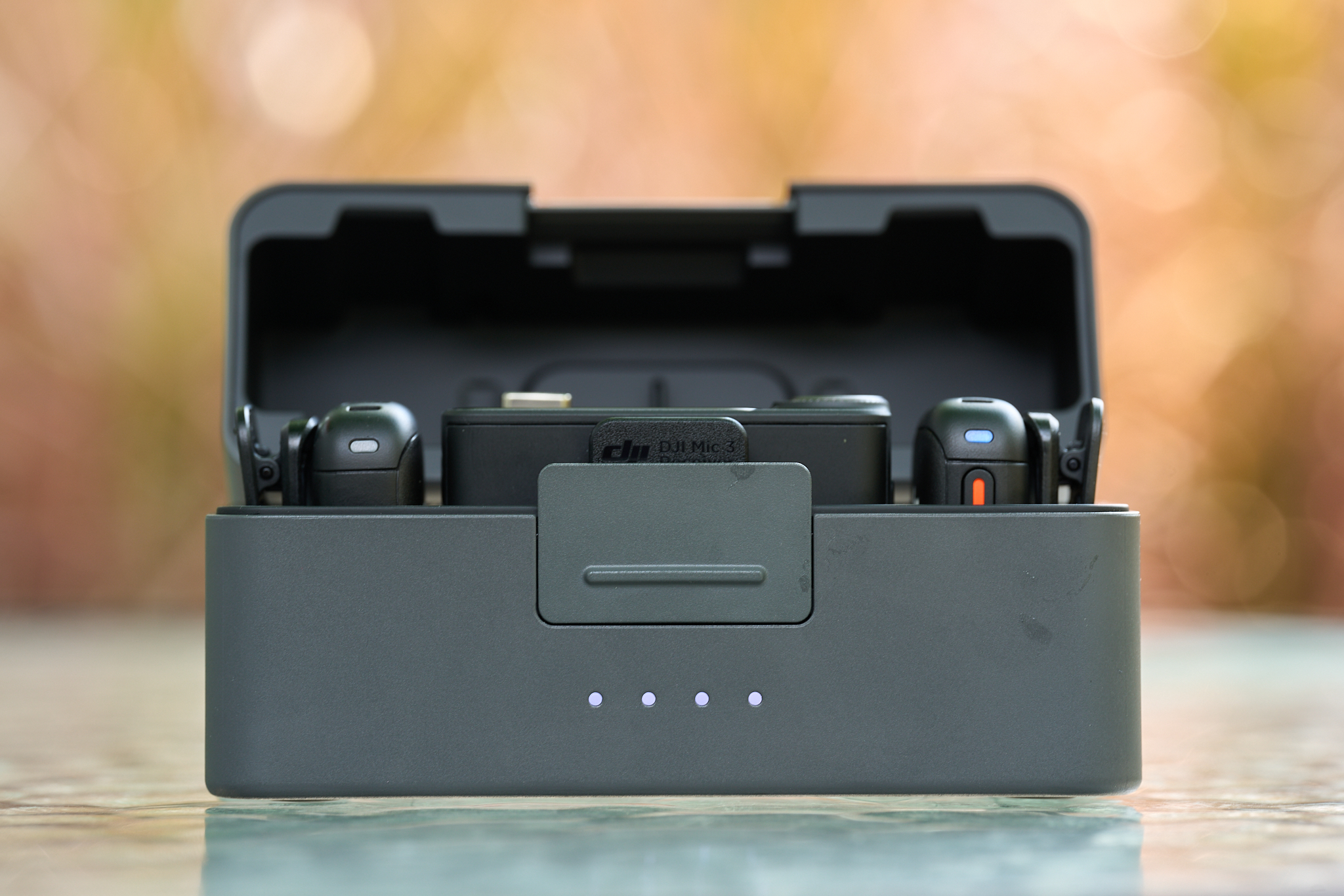
(Image source: Leitech)
In terms of the charging case, the DJI Mic 3 adopts the same press-to-unlock design as the Mic mini, which is safer and more aesthetically pleasing overall. However, it sacrifices the ability to open the lid with one hand. It's a case of gains and losses.
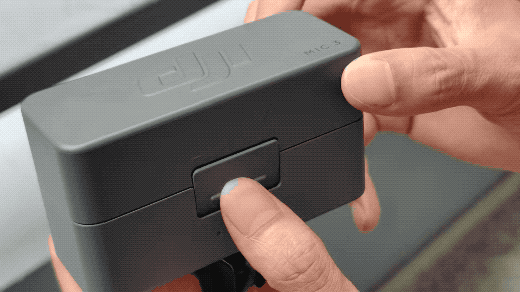
(Image source: Leitech)
It contains two microphone transmitters, one receiver, and a USB-C shoe mount extension port. If needed, an additional lightning connector can also be purchased.
The charging case continues the design of being ready to use upon opening. When we open the charging case lid, the two transmitters and one receiver will automatically power on and can be used simply by removing them. Similarly, when we place the microphones back into the charging case, the case will automatically charge them, and closing the lid will automatically power them off.
The transmitter itself is very compact, weighing only 16g (including the magnet), and its volume is not much different from my own Bose in-ear headphones, demonstrating DJI's impressive internal stacking design craftsmanship.
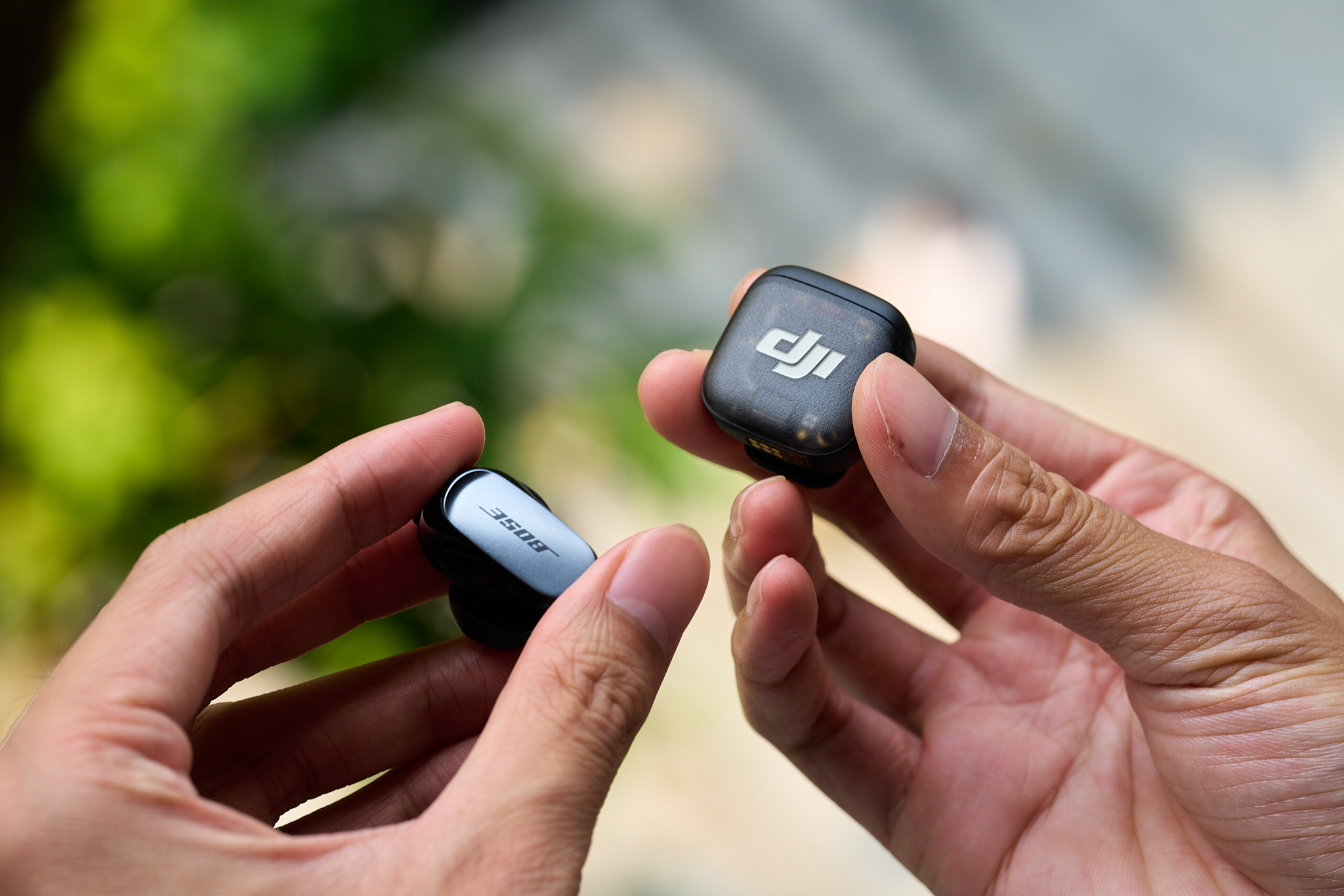
(Image source: Leitech)
However, the distinctive glossy transparent design of the Mic 2 has not been carried over to the Mic 3 (the Mic 3 has a matte transparent finish). I speculate that this is to further minimize the presence of the microphone in the frame, as the most important function of a microphone is audio recording. If it's too flashy, it might detract from the main content.
There is only one power button and one connection button on the transmitter. When connecting to DJI's own Action 5 Pro, Action 4, or Pocket 3, simply take it out of the charging case and select and connect it on the camera; no additional operations or receiver are required. For me, who frequently carries a Pocket 3 on business trips, this experience is quite perfect.
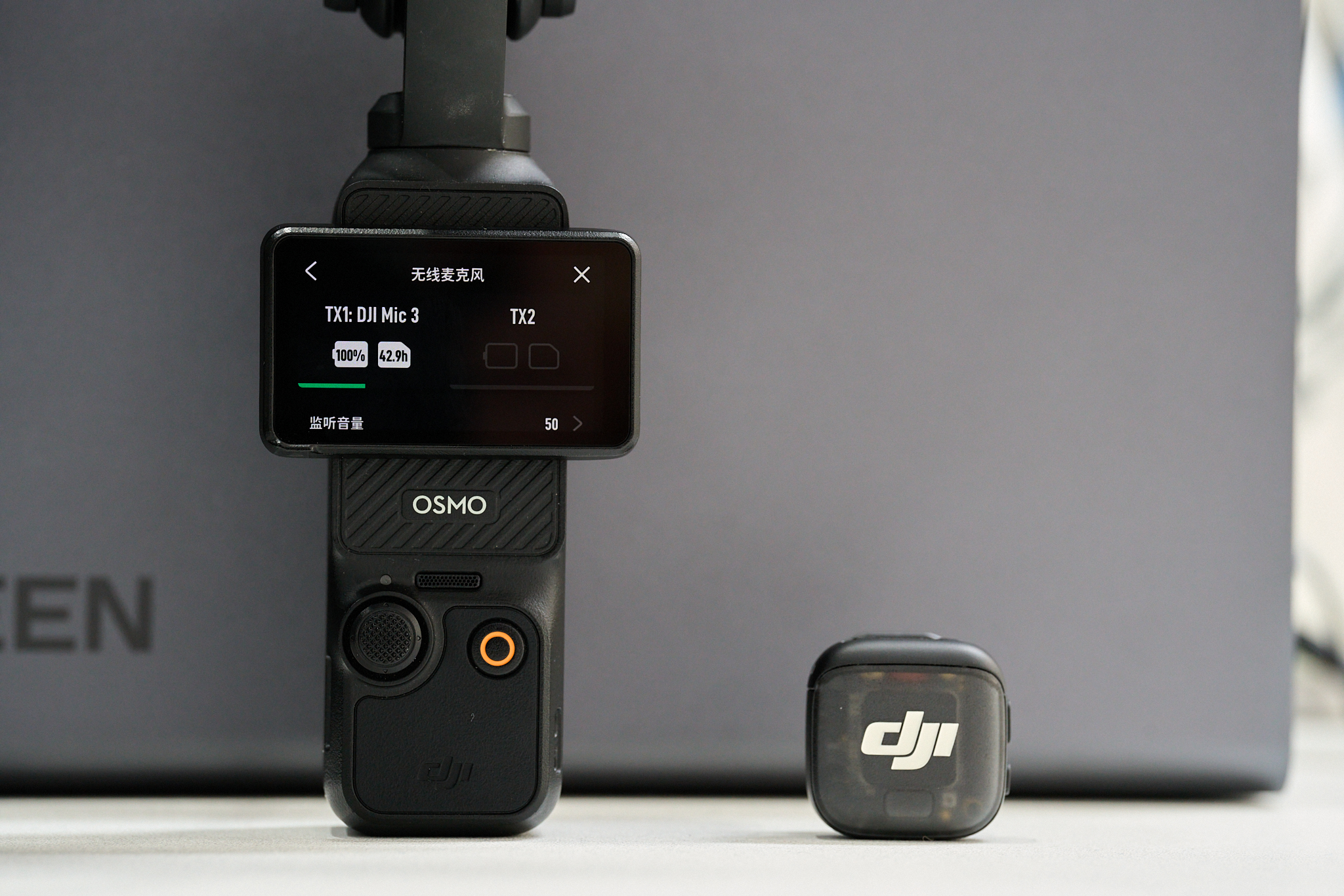
(Image source: Leitech)
Of course, if you want to connect it to a camera or mobile phone, you can directly insert the receiver into the corresponding USB-C port (Sony cameras can be connected via a shoe mount adapter). There is also no threshold for operation; as long as you understand the principles and buttons, you can easily get started.
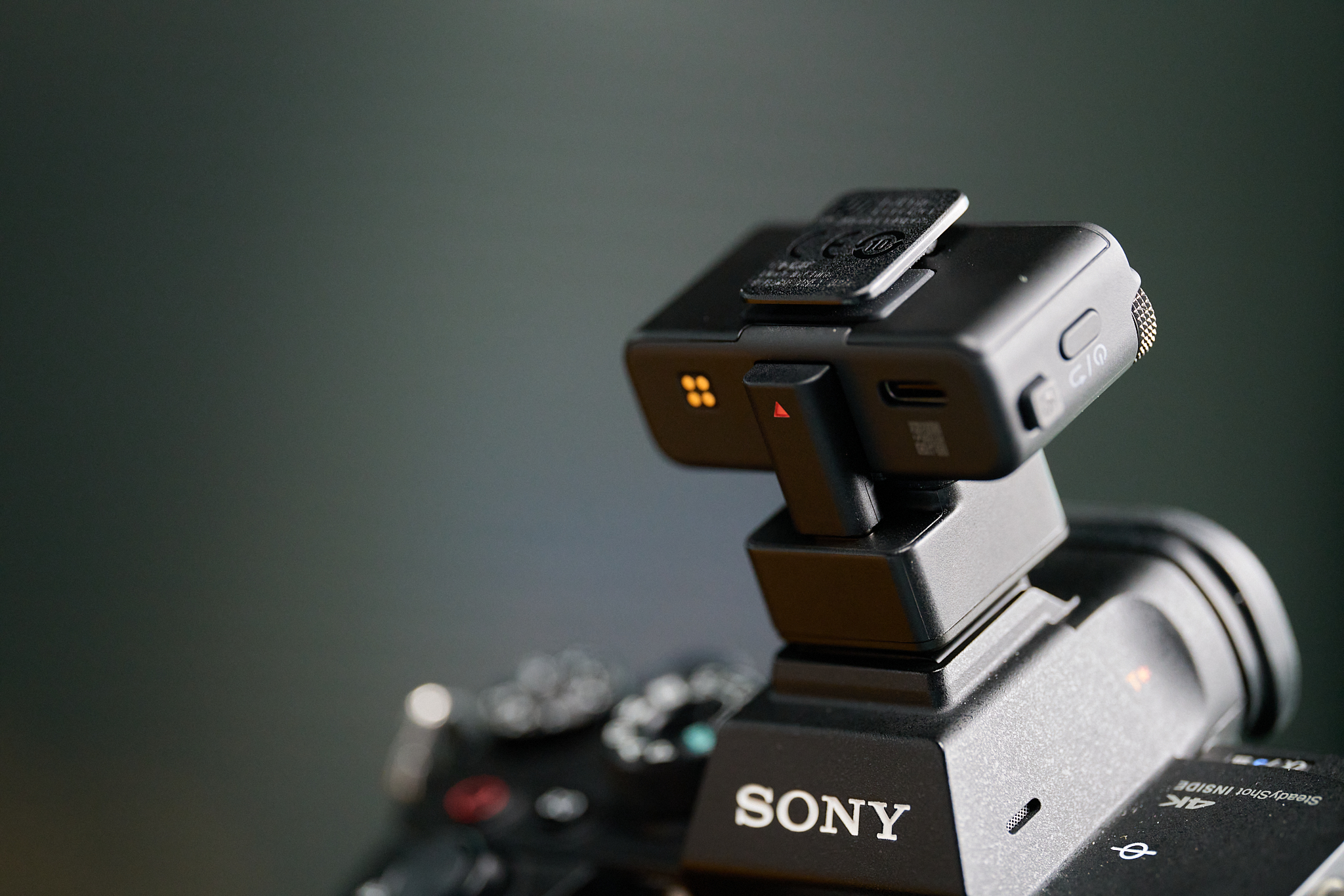
(Image source: Leitech)
Compared to the transmitters, the DJI Mic 3 receiver is larger, but this size still belongs to the mini and compact tier in the wireless microphone market.
Don't be fooled by the small size of the receiver; it is packed with features. For example, the small knob in the top right corner of the screen allows users to directly adjust the audio recording volume. If other parameters need to be adjusted, this small screen also supports touch adjustment.
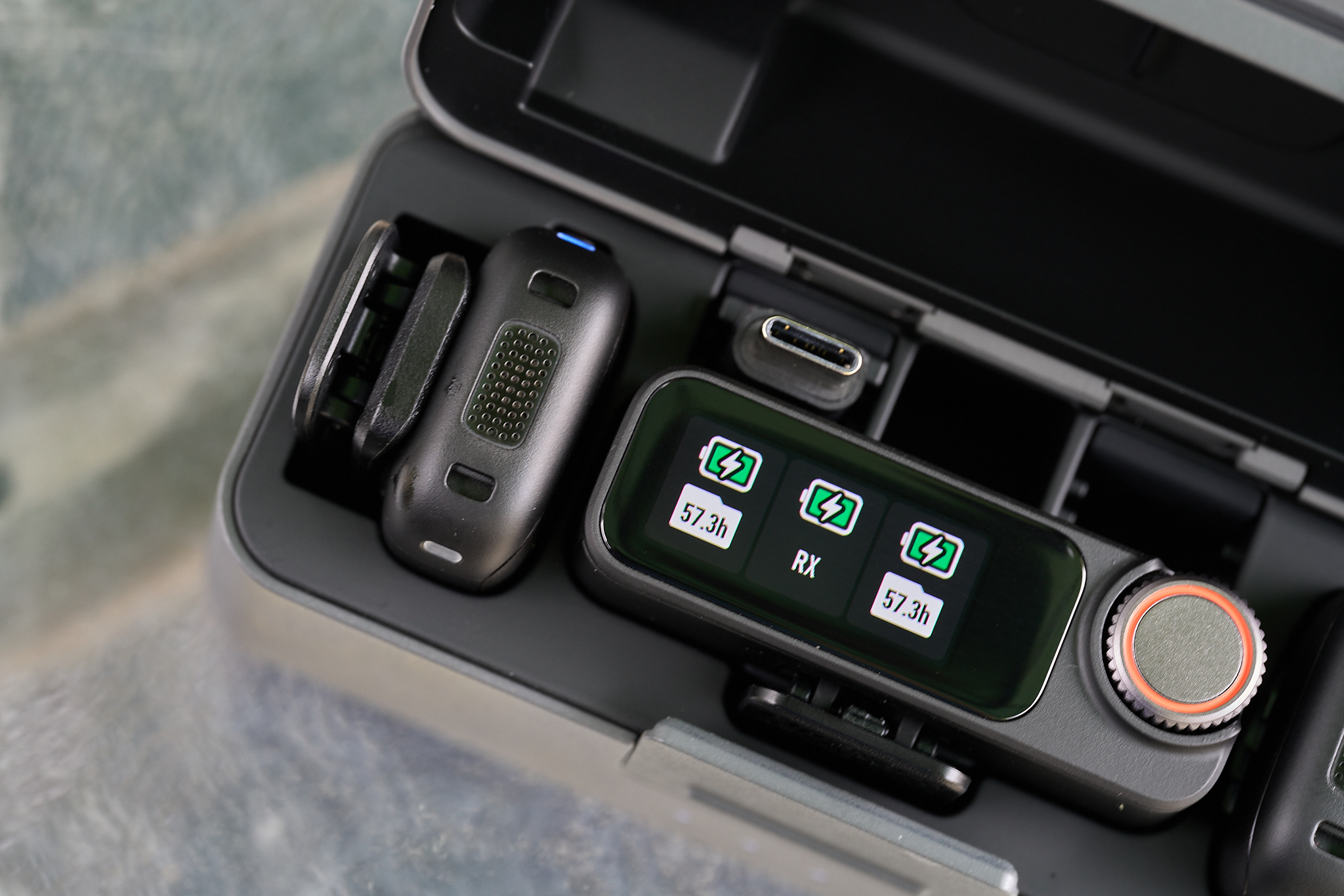
(Image source: Leitech)
For example, when connecting to different cameras, we can set different preset gains on the receiver. It supports most mainstream cameras and has been adapted for each camera, truly achieving "unique sound for every camera".
However, if I have to point out a flaw, due to the very small size of the screen, both sliding and interaction are not very convenient for users with large hands like me. It might be better if it supported voice interaction.
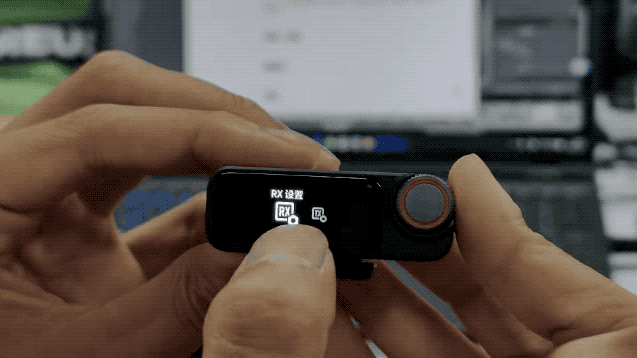
(Image source: Leitech)
Regarding battery life, which is of great concern to everyone, official data shows that a single transmitter can last up to 8 hours, and with the charging case, it can reach 28 hours. I'm not sure if this performance is true, but after using it for a week, I have never encountered a situation where it ran out of battery mid-shoot, so there's no need to worry about this. (When the camera sync power on/off function is enabled, it can also automatically power off with the camera, saving power.)
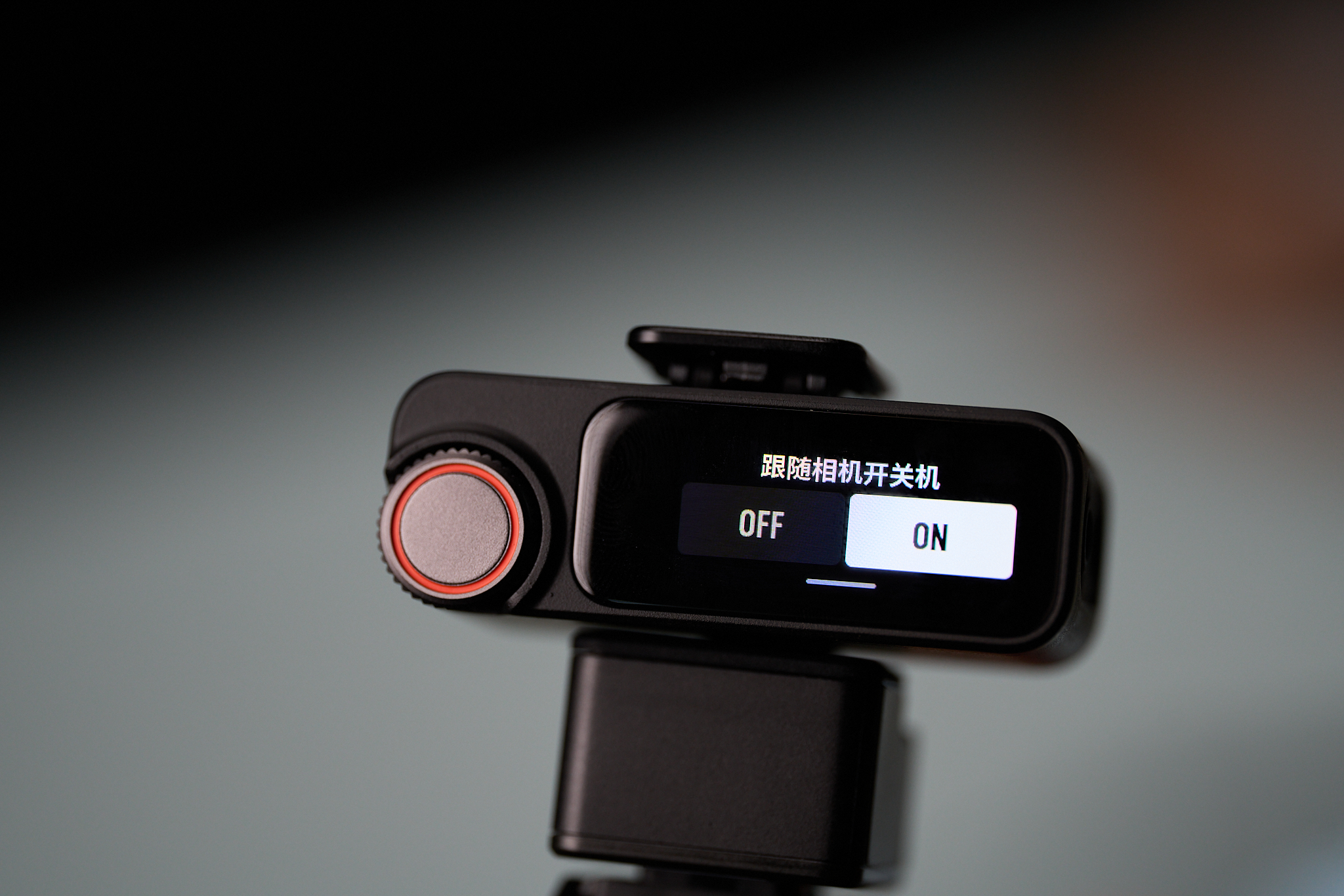
(Image source: Leitech)
The transmitter has two main wearing methods: one is to use the included clip to attach it to a suitable position, and the other is to use the small magnets included in the packaging box for magnetic wearing. Here's a reminder: if the clothing or wearing position is relatively thick, the magnetic wearing method is not safe, and it is not recommended to use this method.
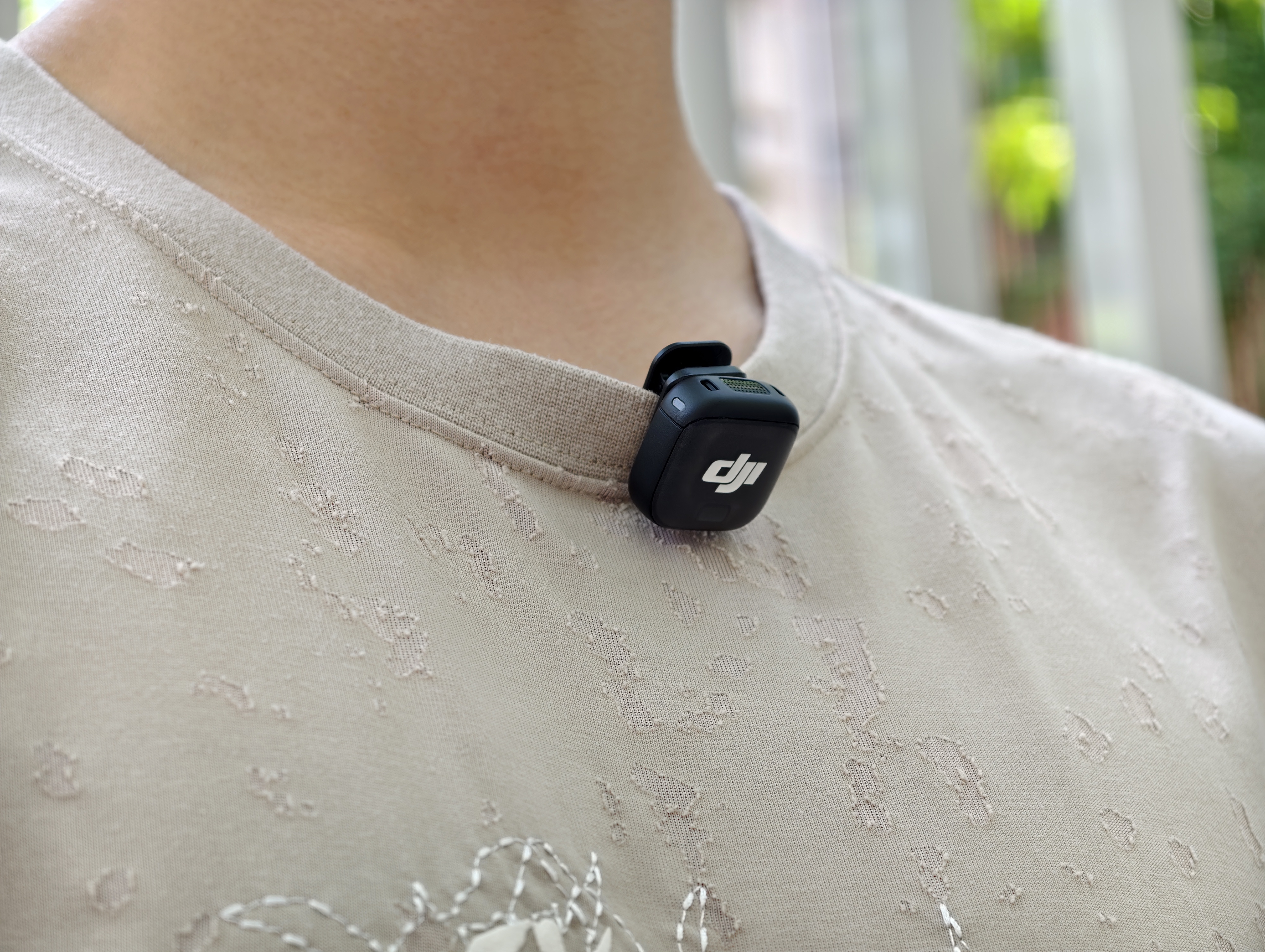
(Image source: Leitech)
In addition, its extremely mini size minimizes the presence of the microphone. Whether clipped to the collar, sleeve, or other places, it highlights a simple sense of elegance. Of course, the most important thing is that the compact size brings higher portability.
From the design, it is not difficult to see that the DJI Mic 3 is a product developed around the user's core experience, which has also sparked my strong interest in its actual performance.
Compact and powerful, audio reception exceeds expectations
As mentioned earlier, DJI has also previously launched the compact Mic mini, but due to its positioning, it lacks some functions and still has a significant gap compared to DJI's own flagship Mic. The Mic 3 is a flagship product that combines a compact body with flagship configuration. Let's briefly go through its parameters: up to 130dB sound pressure level, two levels of active noise reduction, three tone presets, automatic prevention of clipping, support for 48khz 24bit sampling rate, single/dual/quad channel, and 400 meters of stable transmission distance.
If readers unfamiliar with microphones may be confused by this long list of parameters, I can assure you that the parameters of the DJI Mic 3 are at the top level in the wireless microphone market. Especially in terms of intelligent adjustment, it may be the most functional and user-friendly product on the market.
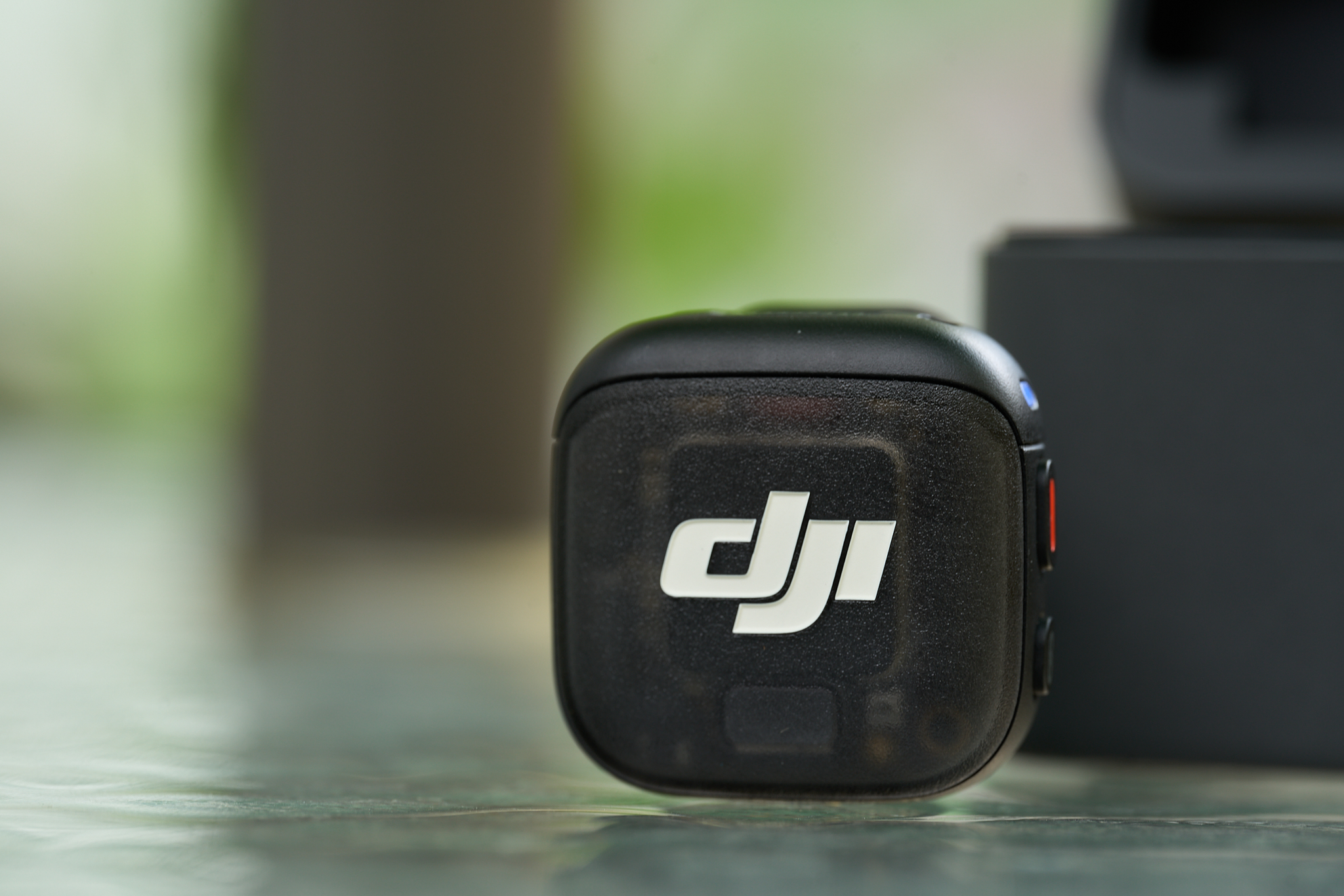
(Image source: Leitech)
Of course, the most noteworthy is the 48khz 24bit sampling rate, which was originally only supported by professional microphones. Most mainstream mini wireless microphones on the market currently only support 48Khz 16bit.
Although the difference between 16bit and 24bit may seem small, there is actually an exponential difference in audio data volume. Because 16bit has only 65,536 sampling points, while 24bit has 16,777,216. The latter can even meet professional-grade post-production needs, retaining more sound details in complex audio environments.
In short, 16bit audio is more used in daily scenarios, such as live streaming and shooting impromptu vlogs, while 24bit can provide better sound quality in daily scenarios while meeting professional needs. Even if you want to use it to record some audio materials to mix at home or edit commercial videos, the 48khz 24bit sampling rate can easily meet those needs.
Of course, these are just theoretical data, and we still need to see the actual effects. To simulate daily shooting scenarios as much as possible, I chose several different environments for testing.
The first is a quiet indoor environment, which is also the scenario I use most frequently in daily life.
From the audio waveform diagram, we can see that when playing the same song on the mobile phone, the overall fluctuation amplitude of the audio waveform diagram recorded directly using the DJI Pocket 3 is not large, but at first listen, the performance seems acceptable.
(pocket 3 recorded song without Mic)
(pocket 3 recorded song with Mic)
[Since audio is not supported, please search for it on Leitech WeChat.]

(Image source: Leitech)
However, after connecting the DJI Pocket 3 to the Mic 3 for recording, the overall fluctuation amplitude of the waveform diagram increased significantly, and the details of the song were preserved in place, with a noticeable improvement in listening experience.
The second is an outdoor scenario. From the audio waveform diagram, we can see that although the surrounding environment is very noisy, the human voice as the main audio source is very clear, and the background noise is greatly reduced. Even if you suddenly encounter a driver honking loudly while live streaming, the horn sound will be reduced to a less harsh level.

(Image source: Leitech)
Finally, I chose a more extreme scenario. I first fixed the DJI Osmo 360 on the motorcycle handlebar and then clipped the Mic 3 to the collar of my short-sleeved shirt (with the second level of active noise reduction enabled), gradually increasing the speed from 30km/h to 70km/h to simulate wind noise in various scenarios.
(Motorcycle, collar, no windscreen)
[Since audio is not supported, please search for it on Leitech WeChat.]

(Image source: Leitech)
Similarly, from the diagram, we can see that the waveform diagram before the speed of 30km/h is very stable, and basically only the operating sounds of the motorcycle engine and exhaust pipe can be heard. When I increased the speed to 50km/h, wind noise faintly appeared (the red area shows the recording effect when the microphone hits the wind). However, fortunately, it does not account for a large proportion and is not harsh, so it does not affect the main recording. After increasing to 70km/h, the sound and frequency of hitting the wind increased significantly, and the proportion of the motorcycle's exhaust sound decreased to about 30%.
Of course, DJI has also officially provided a windscreen, which can be clipped onto the top of the Mic 3 transmitter. After actual testing, the wind noise intensity was significantly reduced, and there was no clipping throughout the process. Therefore, I highly recommend using a windscreen when recording audio in sports scenarios, as it will significantly improve the effect.
(Motorcycle, collar, with windscreen)
[Since audio is not supported, please search for it on Leitech WeChat.]

However, if you put the Mic 3 transmitter in your pocket or backpack, although it sacrifices some sound reception, wind noise is almost completely isolated, which is a good solution.
(Mic in pocket)
[Since audio is not supported, please search and view on Leitech's WeChat.]

(Image source: Leitech illustration)
I briefly tested the two levels of noise reduction. On a busy street, the first level of noise reduction can effectively reduce background noise, and the sound remains clear; the second level of noise reduction is more aggressive, but the human voice will be slightly dry. You can choose according to your needs.
As for the sound quality, forgive me for the difficulty in presenting it through images and text. I'll simply summarize: except for some very extreme recording environments (such as some high-power speakers with very poor external playback quality, ultra-high decibel noise), it can very clearly record all the audio it "hears", and thanks to the support of single/dual/quad-channel, the recorded audio also has a sense of stereo.
Finally, for the long-distance connection test, I conducted a simple test by placing the recording device in the office and then walking from the office to a restaurant directly across the park. The straight-line distance is about 350m. Confirmed by colleagues, the audio recording was still uninterrupted and without lag.
However, when I intended to test its limit distance, the audio recording started to be intermittent when I just walked to about 360m, and it completely lost connection after walking a few more meters. I guess this should also have something to do with strong signal interference in the surrounding environment. If it's in some extremely open scenarios, 400m should be fine.
By the way, if there are really no devices around you, you can also consider directly inserting the receiver into your phone, adjusting various parameters of the microphone transmitter through DJI's mimo software, and using the transmitter as a recording device.
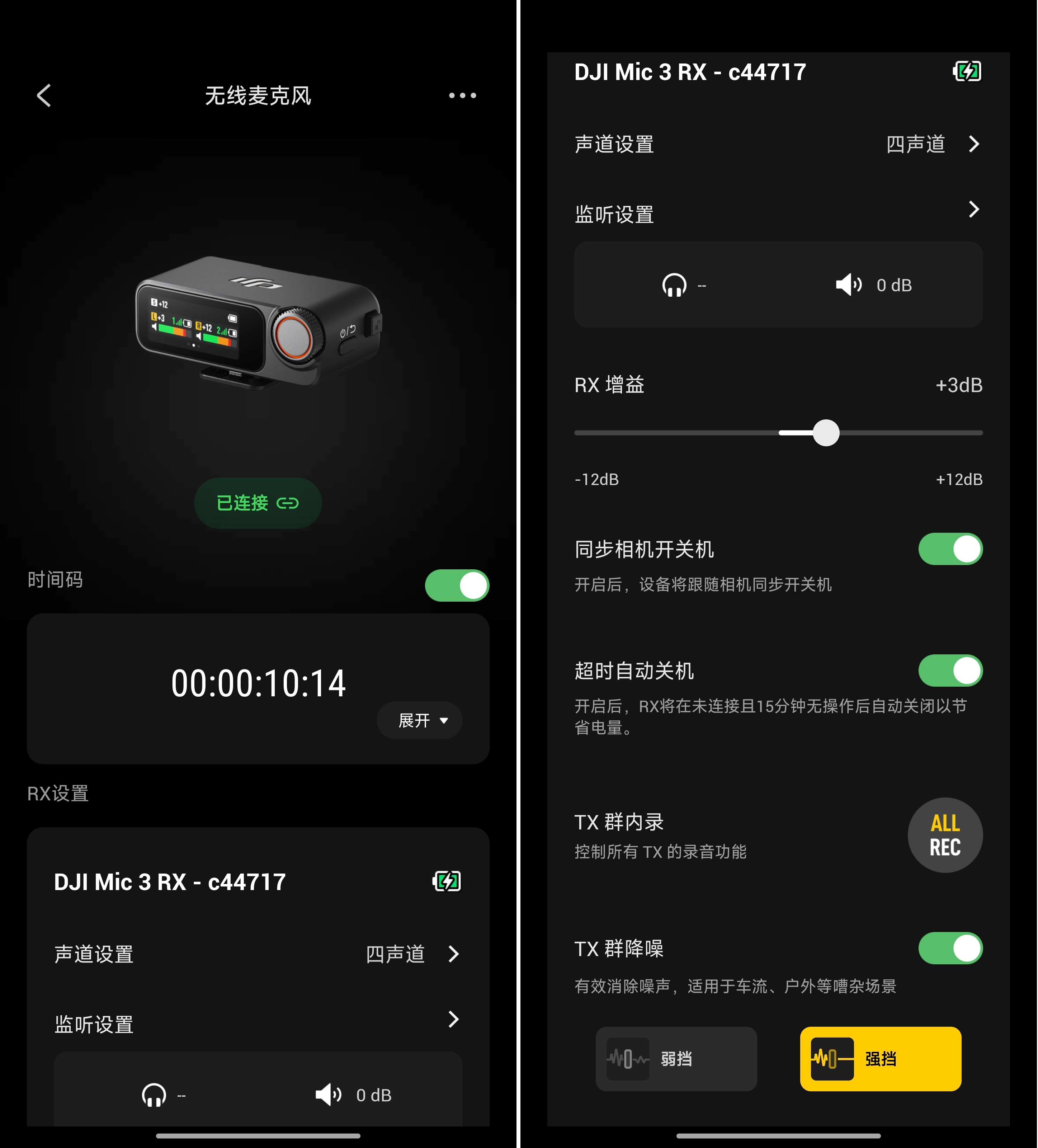
(Image source: Leitech illustration)
In addition to being used with shooting equipment, the DJI Mic 3 microphone transmitter can also work independently for sound recording, that is, as a voice recorder. Coupled with the microphone transmitter's built-in 32GB storage, 8 hours of battery life, and dual internal recording functions, I am willing to carry it with me even when I have no shooting plans.
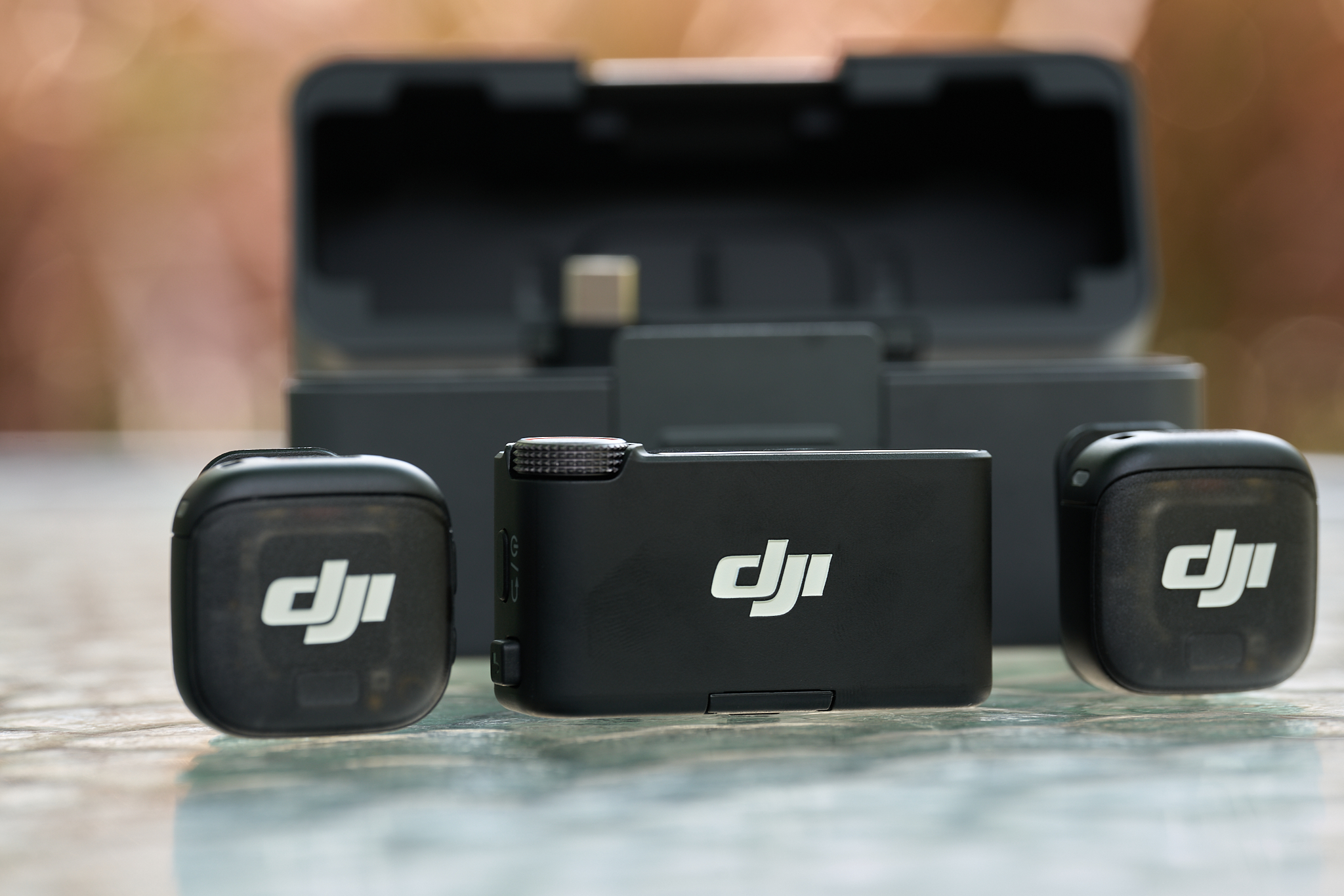
(Image source: Leitech illustration)
After all, its compact size combines the functions of a voice recorder and a wireless microphone. With a full-featured USB-C cable, it can even be used as a USB flash drive in an emergency. For some temporary footage shot with a mobile phone, the audio will no longer be completely unusable.
Almost forgot, one receiver of DJI Mic 3 can simultaneously use four transmitters for sound recording, and one main receiver can even connect to seven connectors at the same time, forming a monitoring "group" with four transmitters and eight receivers (i.e., four people, eight cameras). This feature also enriches its application scenarios. In group interviews, multi-person live broadcasts, and other scenarios where multiple guests need to speak simultaneously, DJI Mic 3 comes in handy.
In addition, the receiver of DJI Mic 3 can be paired with the DJI Mic series digital hot shoe, compatible with Sony cameras with four independent audio track inputs, set up four-channel recording, and output four independent audio tracks, which facilitates the separation of human voices during multi-person recording and makes post-processing more convenient.
Summary: A new benchmark for wireless microphones
Finally, according to Leitech's review convention, I will briefly summarize the performance of DJI Mic 3:
Advantages:
1. Compact and easy to carry, with a weight of 16g, it won't wrinkle or deform clothes when clipped to the collar;
2. Simple and intuitive operation, DJI is still very friendly to novice users;
3. Extremely long battery life, almost no need to worry about running out of power during work;
4. Good recording specifications, good noise reduction effect, stable connection;
5. Strong scalability, basically able to connect to mobile phones, cameras, and DJI's own devices;
Disadvantages:
1. A voice interaction function should be added to the receiver;
2. The charger case should be made smaller as the transmitter is already small.
After reading the previous content, you should have the answer to the performance of DJI Mic 3. As a wireless microphone, it still very "DJI"-like compensates for the shortcomings of its predecessor and further exerts its original advantages: ultra-long battery life, stable connection, ready-to-use features, simple and intuitive parameter settings, which greatly reduce the threshold for getting started and simplify the workflow.
The features of triple tones, two levels of noise reduction, and automatic gain make users not have to worry about receiving unusable audio in complex sound reception environments; the existence of professional formats also makes it compatible with professional workflows.
As a digital enthusiast and video creator who is between professional and non-professional users, my evaluation of DJI Mic 3 is only one short sentence: It would have been great if it had come out earlier.
Source: Leitech
Images in this article are from: 123RF Authentic Library Source: Leitech







